‘Confidential’ design for scrapped Royal Yacht revealed
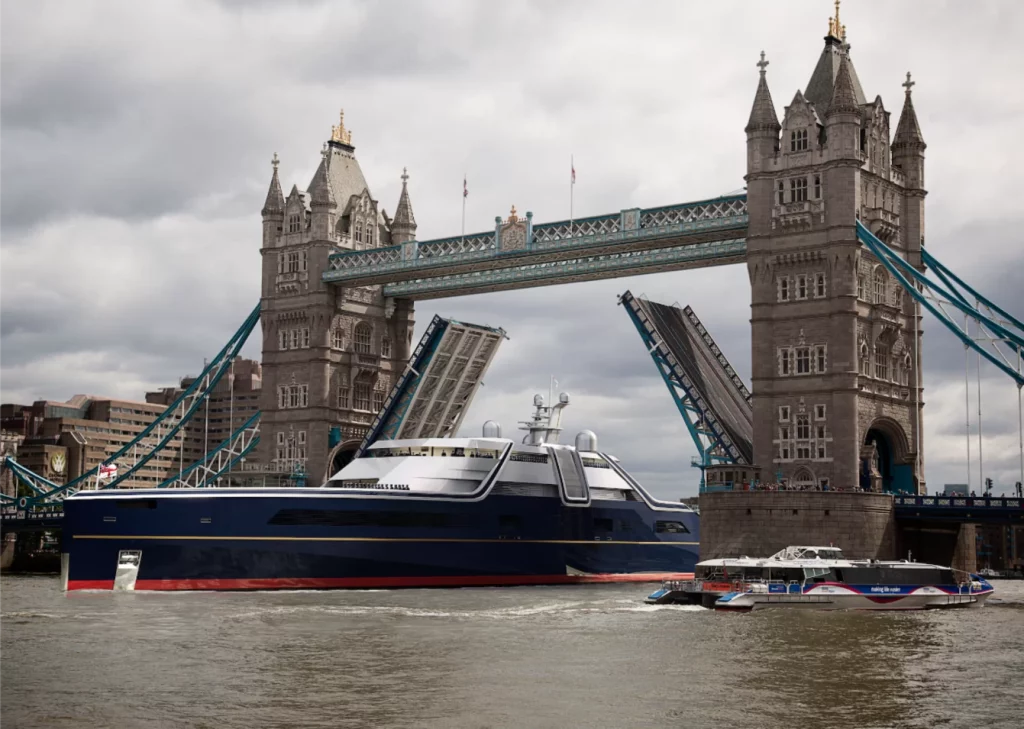 Vitrivius Yachts national flagship rendering (4)
Vitrivius Yachts national flagship rendering (4)
London-based superyacht design firm Vitruvius Yachts has revealed details of its design for the Royal Yacht Britannia — a national flagship that was scrapped after being dubbed a Boris Johnson “vanity project”.
The British government invited several firms to submit designs for a new flagship yacht, which would have replaced the former Royal Yacht Britannia. Construction on the £250m vessel was due to begin this year, with the boat to hit the water in 2024 or 2025.
While details of the 19 shortlisted companies have not been confirmed, the Telegraph reported in May that the final two teams of designers left in the contest were a consortium led by Houlder Ltd — the firm behind RRS Sir David Attenborough; and Harland & Wolff, best-known for building White Star Line’s ocean liners, including the Titanic. Neither firm has so far showcased its design.
Vitruvius Yachts and its collaborative team, called Team FestivAl, have now revealed their concept for a “highly technological” 125-metre superyacht that was one of those shortlisted as a finalist in the design competition.
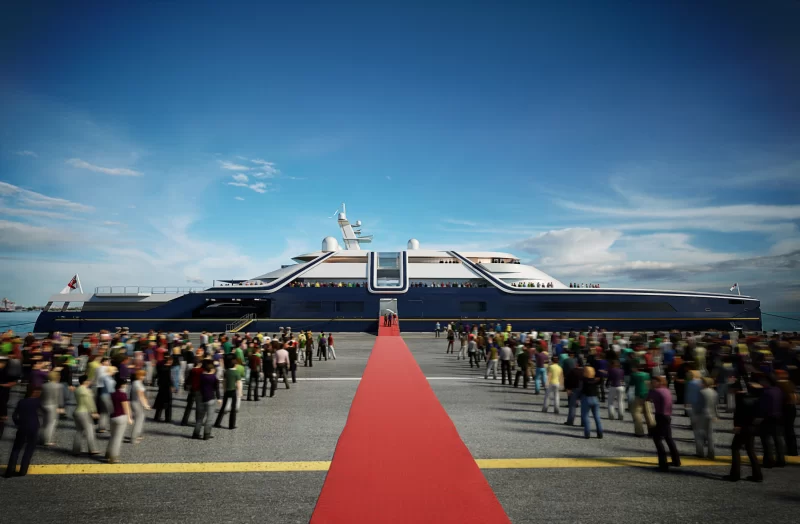
In a statement, Team FestivAl says: “With the government deciding to halt the project, the team is showcasing their previously confidential proposal, highlighting not only the ingenuity of their design but also throwing a spotlight on the extraordinary depth and diversity of British industry and society, amply reflected in the design itself.”
Team FestivAl is a collaboration between Vitruvius Yachts, renowned architecture practice Zaha Hadid Architects, and aluminium ship and yacht specialists Ocea. The plans reveal key features including a focus on sustainable power and propulsion, an efficient hull design, and a flexible deck and interior design that can switch between exhibition showcase or “floating embassy”.
Spearheaded by Vitrivius Yachts’ Philippe Briand – one of the world’s leading yacht designers and a naval architect for both sail and motor yachts – Team FestivAl says its national flagship project draws on several cultural and societal cues, from innovation and sustainability to accessibility and inclusion, to represent the “very best of British” in design, manufacturing, craftsmanship and diversity.
“To design a vessel – a flagship – that will become a benchmark in sustainability as well as demonstrating British excellence and heritage for current and future generations, while also being a symbol of inclusion and diversity, was an enormous challenge that kept me awake at night,” says Philippe Briand. “The nature and intensity of the project kept me focused but also filled me with pride, not just in the design process itself but for what the flagship stands for.”
The technical elements of Team FestivAl’s national flagship project are said to centre on sound naval architecture and clever superstructure design. The result is a vessel that is both highly efficient in the water – with designs claiming 30 per cent less hydrodynamic drag than a conventional steel ship – and also in the air, with a drag coefficient of just 0.28 — less than most cars.
The design would have been built in recycled aluminium (the ‘Al’ in ‘Team FestivAl’), which is lighter than steel and therefore reduces the power required for propulsion, which in turn reduces emissions. Indeed, Team FestivAl conducted a study with the non-profit Water Revolution Foundation in conjunction with the University of Bologna which found that the hull and superstructure design, over a lifecycle of 30 years, would emit 30 per cent fewer greenhouse gases than a conventional design.
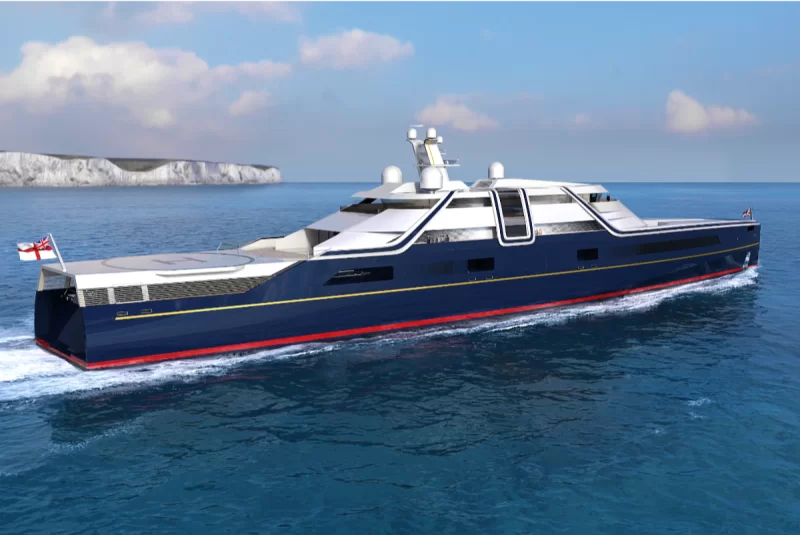
Power for the pod drives would have come from a large battery bank that could be charged via shore power or onboard generators, initially using renewable diesel/biofuel but allowing for alternative energy sources now and in the future including green hydrogen fuel cells and onboard-harvested solar and wind energy.
The exterior profile includes a distinctive central slice through the superstructure that takes the form of a hoop of glass, flooding the interior with light and providing a key design element that, combined with a distinct LED-lit style line in the profile, hints at the ribbon pattern in the Union flag. This is reinforced in the design when viewed from above.
At night, the LED-tile ribbon and lighting scheme developed by Jason Bruges Studio turns the vessel into a lighting sculpture that projects the Union flag, reflected in the water. The lighting scheme also allows for messages to be displayed, and for lighting to be matched to a given theme or location.
Central to the vessel’s design is accessibility for all across all decks and areas. The wraparound glass of the atrium provides a sense of light and space while delivering plenty of natural light for the visually impaired. Access routes throughout the vessel have been considered with people of all ages and all levels of ability or disability in mind.
The plans show that the interior spaces themselves have been developed around a need for flexibility of use and purpose, from national showcase and exhibition space to state dinners and private receptions. These include a large aft formal dining room that can be configured in multiple ways; a greeting/bar area with breakout rooms, and moveable partitions that allow for quick switching between operational modes; and a modular mission bay in the aft end of the vessel that can be used for trade show demonstrations, storage of additional equipment or humanitarian supplies and modular medical facilities, a modular science lab or extra accommodation or office space.
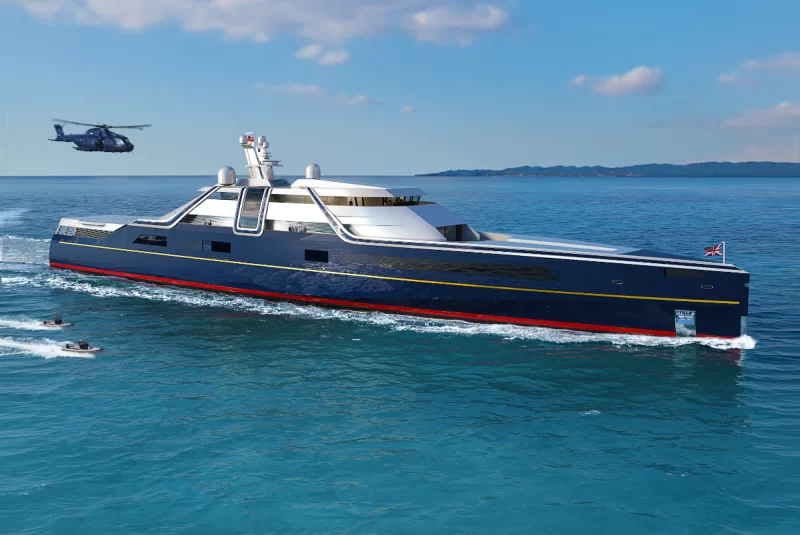
“The flagship collaboration was an incredible opportunity to act as an architect realising the design of a project that was hugely complex, because it aims to represent not the tastes of one person but the essence of an entire nation,” Briand says. “That is actually way more difficult than designing for even the most demanding individual.”
Team FestivAl says its national flagship was “more than just a design exercise – it is a celebration of the UK as a vibrant and inclusive multicultural society, as a hotbed of design, engineering and manufacturing, and as a nation with a rich seafaring heritage and a world-leading future as a developer of sustainable technologies.”
In November, former business secretary Jacob Rees-Mogg said Johnson’s plans for a new flagship were not in the “realms of reality” and suggested it was a “glorious distraction” that should be scrapped, given the UK’s cost of living crisis.
After the plans were scrapped, the Mirror quoted defence secretary Ben Wallace saying: “The MoD has not assumed any liability for costs incurred by bidders in the design competition. And no design or manufacturing contracts have been placed.”
The former Royal Yacht Britannia — decommissioned in 1997 — is currently open to tourists in Leith, Edinburgh.



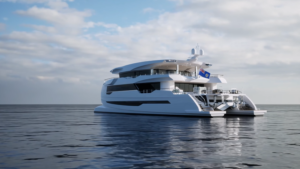







Hideous waste of money and a disgusting vanity project by a corrupt and tawdry conservative government who need to be booted out of power so they cannot waste more taxpayer money.
Good to hear it’s scrapped.
Shame about the decision not to go ahead in principle, but thank goodness we’ve been spared the humiliation of a vessel that looks like that.
Brittannia earned us millions and millions over the years and should never have been laid up. I agree with your comments regarding the government but I would welcome a replacement Brittania.
King Charles is one of the richest human beings on this planet. If he wants a Yacht he’d can buy one!
Been a great opportunity to show off Britain’s fast diversity of Craftsman and products it’s a shame it’s not going ahead but never say no let’s keep our fingers crossed
King Charles is not one of the richest human on the planet, because most of his perceived wealth actually belongs to the state. As to the construction of a replacement royal yacht, why not?, it would bring much needed prestige to Great Britain. The cost is minimal in the greater scale of things, shall we say compared to money spent on illegal immigrants to the detriment of our own indigenous homeless citizens.